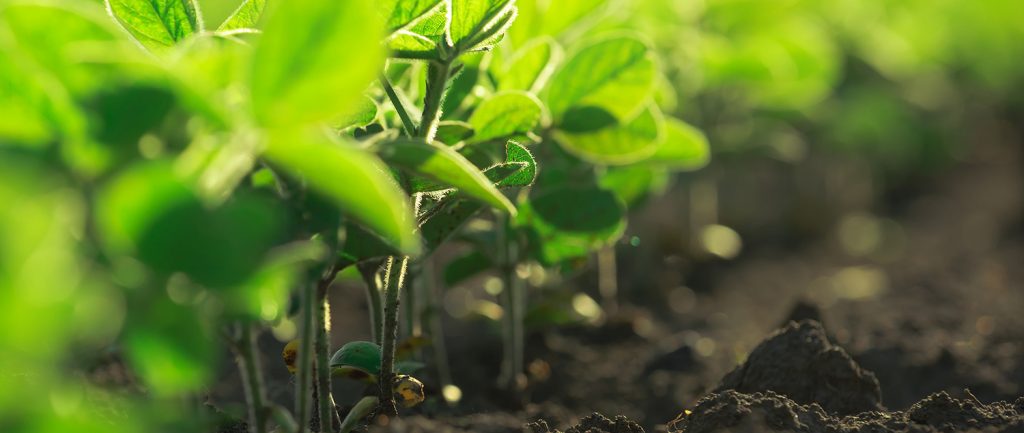One of the most impactful equations of my career has been:
H++ OH– <-> H2O
In other words: a positively charged hydrogen ion reacts with a negatively charged hydroxyl molecule to form water; water dissociates to produce a positively charged hydrogen ion and a negatively charged hydroxyl molecule. Water is known as the universal solvent, a characteristic largely explained by this equation. As water dissociates (moves to the left side of the equation), it provides charges – positive and negative – which can react with other chemicals. Thus, water in pure form may have a net neutral (the plus and minus charge add up to zero), but it has charges, which may impact performance of any additional chemistry. How much impact is dependent on charge type and amount.
The sprayer is one of the most commonly used implements on farms today. The tool distributes a wide variety of farm inputs that impact crop performance. There are multiple conversations, marketing campaigns, etc. that communicate the pros and cons of the input in question. However, we often forget more than 95 percent of the solution is water.
What does water do? Lots! In addition to being the carrier for the input being applied, physically the amount of solution applied per acre impacts the distribution of the input across the field and onto the pest or crop. As the amount of solution applied is moderated through nozzle selection and sprayer pressure, droplet size changes. The droplet size, and pesticide concentration within the droplet, may impact input efficacy and definitely impacts droplet off target movement (drift).
Chemical factors come into play, also. These factors can largely be explained by amount of ion charge as well as charge type (negative or positive). Turbidity, a measurement of water clarity and, indirectly, suspended sediments, often provide a negative charge component and interacts with many pesticides. These suspended sediments (plant material, clay particles, organic acids, etc.) tend to be small, often highly charged, particles that react with many pesticides, precipitating them out of solution and making several ineffective. The precipitates often end up in sprayer screens, further impacting sprayer efficacy, not to mention operator frustration.
Minerals, specifically in the ionic stage, may react with pesticides. Increasing water hardness, a measure of calcium and magnesium content, often decreases pesticide effectiveness (efficacy) and can decrease pesticide absorption into the pest. Other minerals, specifically Iron (Fe) and Aluminum (Al) occur in “soft” water, but also impact pesticide performance. The cationic (positively charged) minerals will react with weak acid pesticides, such as glyphosate, forming a salt thereby reducing plant uptake. Addition of sprayer grade ammonium sulfate (AMS) to glyphosate solutions counters the impact of high mineral content water by complexing ammonium (NH4+) ions with the glyphosate (negative charge) and using the sulfate to react with the mineral cations.
Solution pH is the logarithmic measurement of hydroxyl ion (OH-) activity and the inverse, logarithmic measurement of hydrogen ion (H+) activity. The lower the pH, the more hydrogen ions, and the fewer hydroxyl ions. As pH increases, hydroxyl ion numbers increase while hydrogen ion numbers decrease. At a pH of 7, the hydrogen and hydroxyl ions are balanced in activity (amount of charges). Solution pH can affect the absorption of pesticide into the plant, reduce stability (half-life) of the pesticide and influence off-target movement. Results from ongoing studies in the Upper Delta (Mississippi, Tennessee and Arkansas) indicate low solution pH mixtures are related to incidents of volatility for newer dicamba products.
It’s critical for farmers to know their water and how it affects selection, utilization and efficacy of input tools. Chemistry (water) plus chemistry (pesticide) equals more chemistry.
Test your water frequently, learn how it changes and how those changes impact your pesticide program. Pocket pH meters allow rapid, affordable measurements. Turbidity (clarity) is relatively easy. Other tests vary in cost and time required. Use this information when you make decisions.
The bottom line: Make sure your advisor has this information readily available as your team develops your management program. Input decisions, in these tough economic times, are especially critical to your bottom line.
David Kee is the director of research at Minnesota Soybean and can be reached at 507-388-1635 or dkee@mnsoybean.com.







